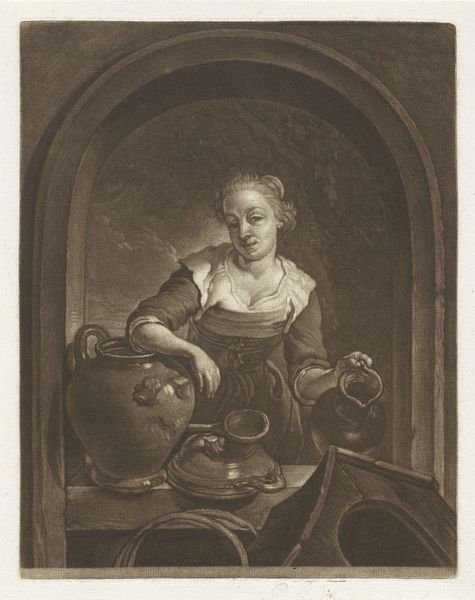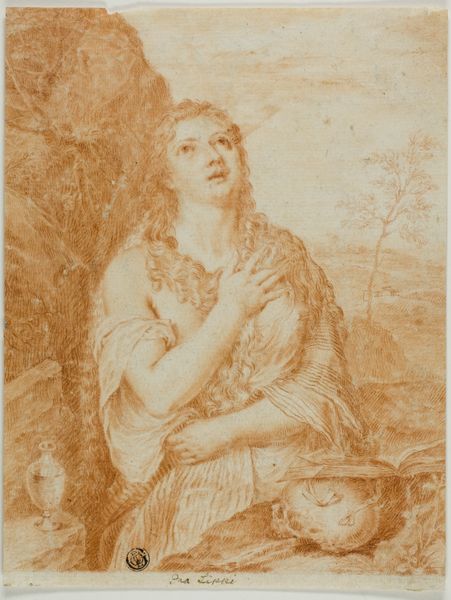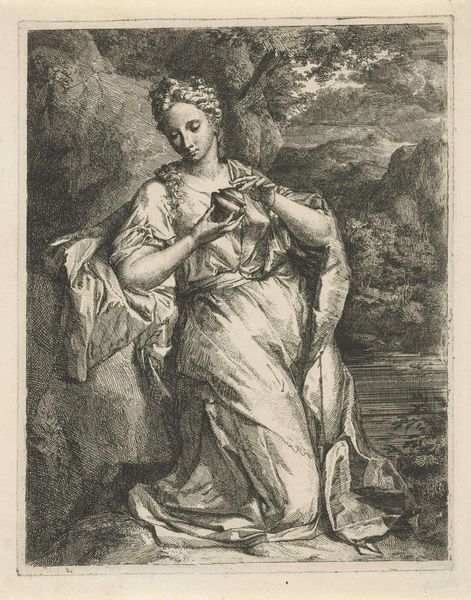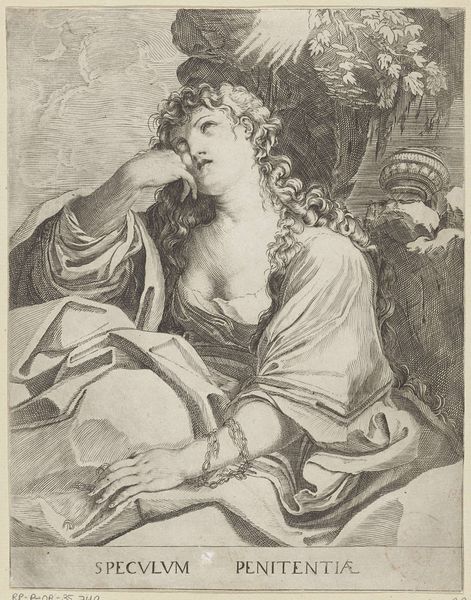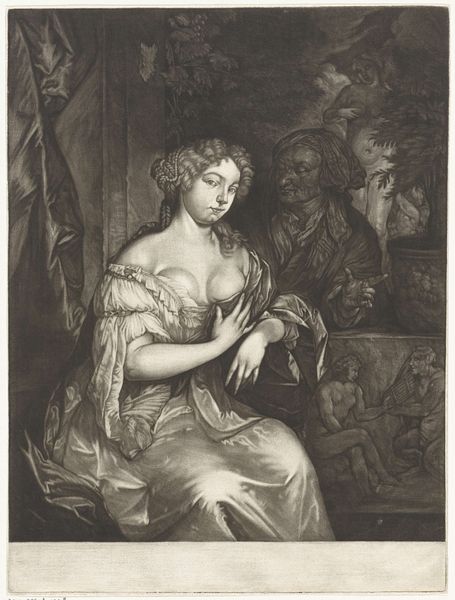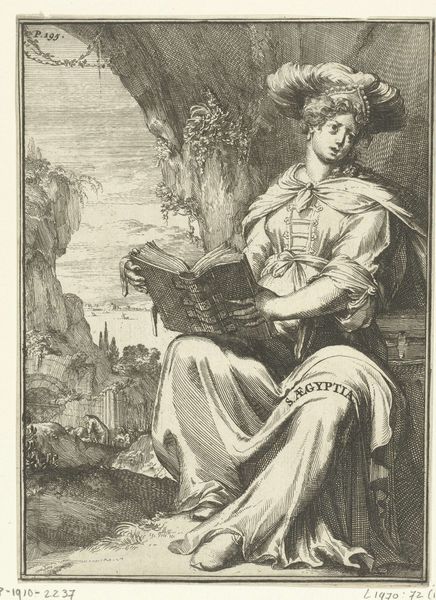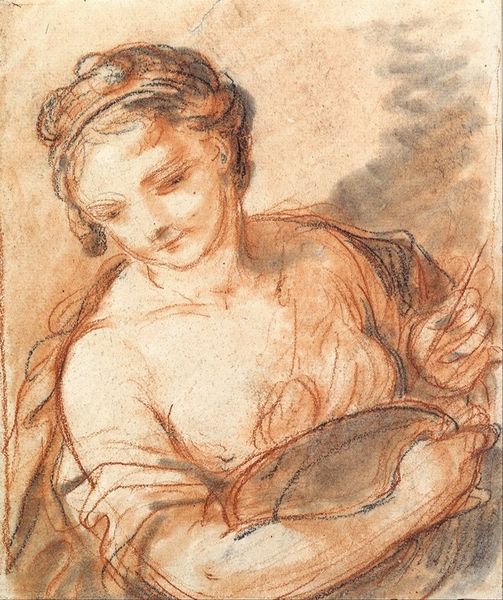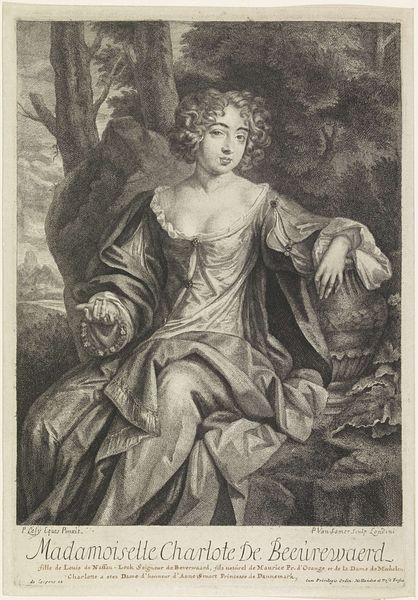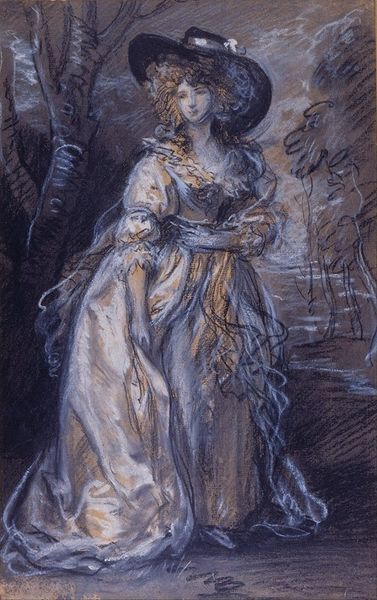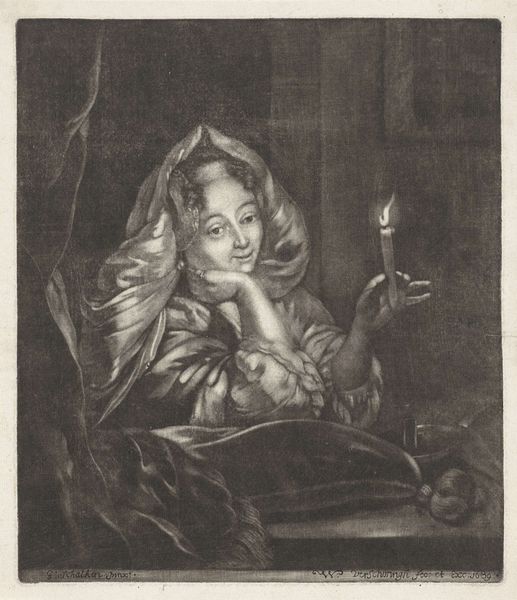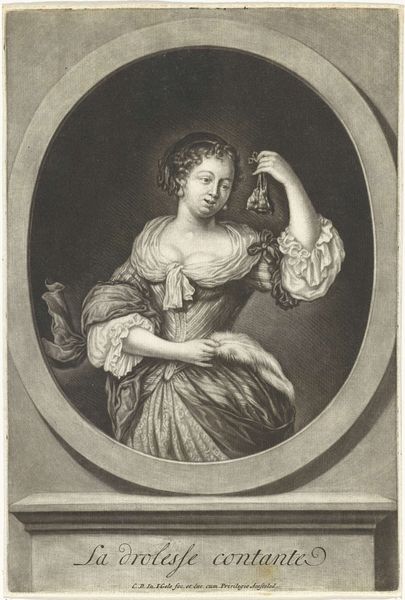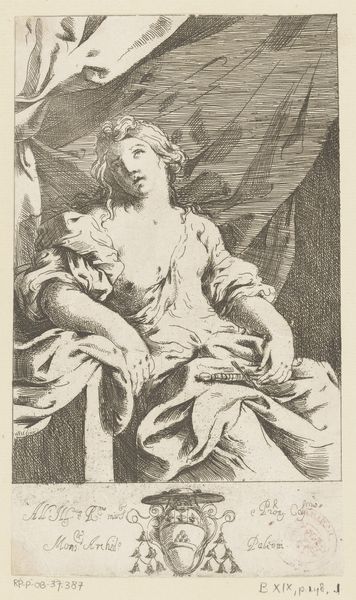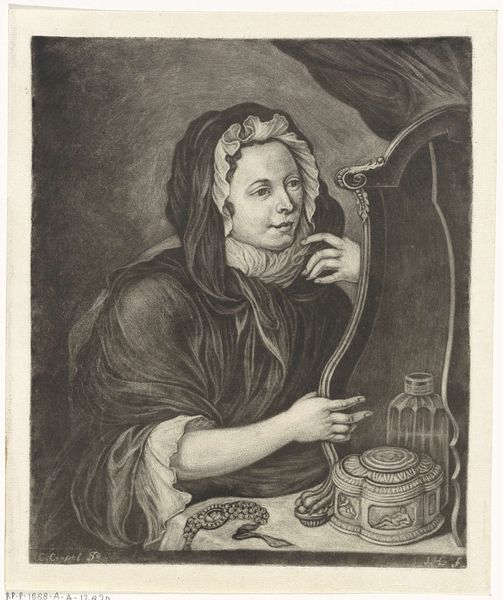
Copyright: Public Domain: Artvee
Curator: There’s a distinct weight to this painting; a serious stillness despite all the, well, dead fish. Editor: Precisely! Here we have "Fischverkäuferin", or "Fish Seller" in English, an 1872 oil painting by Hans Canon. Note Canon’s masterful use of chiaroscuro, drawing our eye directly to the subject, illuminating her face and hands while plunging the surrounding space into a shadowy baroque embrace. Curator: It almost feels voyeuristic, like a snapshot taken without her knowing. She's not posing, she's just...there. And those eyes! They're full of something—resignation, perhaps? Or maybe a hint of defiance? It is strange and arresting. Editor: Yes, the angle is critical. Consider how the composition itself—the carefully arranged fish, the texture of the textiles, the lighting—contributes to that sense of spontaneous realism and inherent human dignity. Canon gives this subject great monumentality while working in genre painting. The fish act as compositional elements while rooting her firmly in a place, a role, an identity. Curator: They definitely anchor her, visually and figuratively. The composition seems a bit...unromanticized and almost heavy, but there is real talent there too. I imagine her hands constantly smell of fish despite washing many times during the day, maybe for her whole life. Does that somehow contribute to our feeling? The details do add such subtle layers of empathy and truth. It also strikes me the lighting could be more luminous or idealized. Canon made an interesting choice with these tonalities. Editor: Indeed. It invites a slower reading, wouldn’t you agree? Canon, with great precision, has captured the mundane transformed through pictorial construction. The tension he creates—that dance between real life and crafted tableau—compels me to think about painting’s purpose and the reality of representation, always constructed and always present, whether we are ready or not. Curator: Well said, a fitting end note to considering Canon’s careful art here and her place, not only in his composition, but her existence in her place too.
Comments
No comments
Be the first to comment and join the conversation on the ultimate creative platform.
